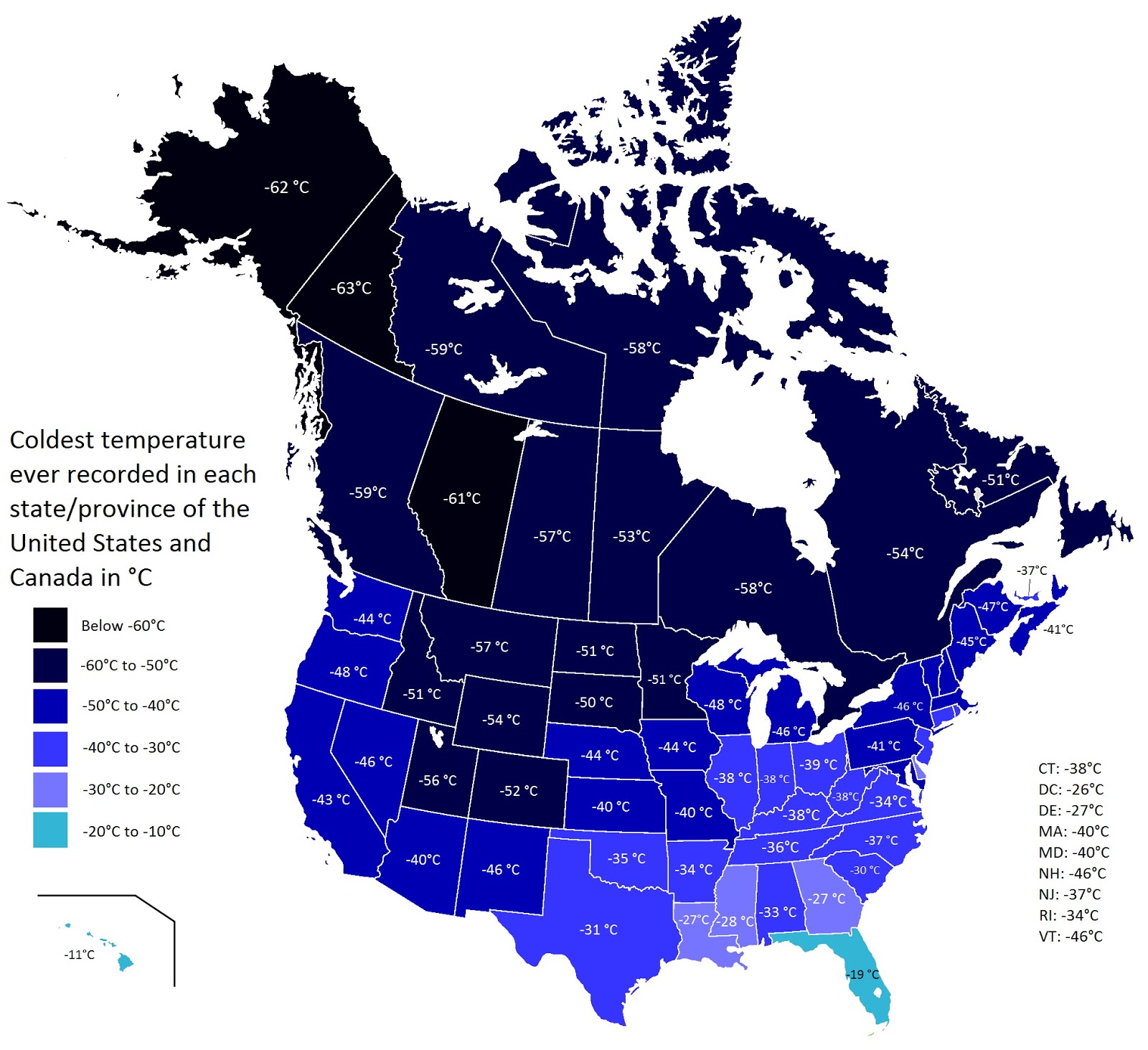The coldest states in America are not just about frigid temperatures; they're about breathtaking landscapes, unique cultures, and resilient communities. Each of these states offers a distinct experience for both residents and visitors alike. In this article, we will delve into the characteristics, climate, and lifestyle of the coldest states, providing you with an in-depth understanding of what makes them unique. Whether you're considering a visit or just curious about the coldest corners of the nation, this guide will equip you with all the pertinent information.
From the icy winters to the stunning natural beauty, the coldest states in America have a lot to offer. Understanding their climate and culture can enhance your appreciation for these regions. The cold can be daunting, yet it shapes the identity and lifestyle of the people who call these states home. Prepare to embark on an insightful journey through the coldest states, as we uncover the secrets hidden within their snowy landscapes.
As we explore the coldest states, you’ll discover essential facts, tips for visiting, and the unique features that define each area. This article is structured to guide you effortlessly through various aspects of these frigid states, ensuring a comprehensive understanding of their cold climates and the beauty they hold.
Table of Contents
- 1. The Coldest States in America
- 2. Climate Overview of Cold States
- 3. Unique Features of Cold States
- 4. Cultural Aspects of Cold Weather States
- 5. Activities to Enjoy in Cold States
- 6. Living in Cold States
- 7. Weather Statistics and Data
- 8. Conclusion
1. The Coldest States in America
The coldest states in America are primarily located in the northern part of the country. Here’s a quick look at the top contenders:
- Alaska: The coldest state, known for its extreme winter temperatures.
- North Dakota: Famous for its bitterly cold winters.
- Minnesota: Known as the 'Land of 10,000 Lakes' with harsh winters.
- Wisconsin: A state that experiences severe winter weather.
- Montana: Notable for its cold mountain ranges and long winters.
2. Climate Overview of Cold States
The climate in the coldest states varies significantly, influenced by geographical and atmospheric factors. Here’s an overview:
2.1 Temperature Ranges
In Alaska, temperatures can plummet to -30°F (-34°C) or lower in winter months. North Dakota experiences temperatures around -20°F (-29°C), while Minnesota often sees similar chills. These states have robust systems in place to cope with extreme weather.
2.2 Precipitation Patterns
Snowfall is common in these states, with some areas receiving over 100 inches annually. Understanding these patterns is crucial for preparing for travel or life in these conditions.
3. Unique Features of Cold States
Each state has its unique attributes that contribute to its cold environment:
3.1 Natural Beauty
From Alaska's stunning glaciers to Minnesota’s picturesque lakes, the natural beauty is a significant draw for visitors. The northern lights can often be seen in these regions, providing a breathtaking view.
3.2 Wildlife
Cold states are home to diverse wildlife, including bears, moose, and wolves. Wildlife enthusiasts can enjoy observing these animals in their natural habitats during the warmer months.
4. Cultural Aspects of Cold Weather States
The culture in cold states is deeply influenced by their climate:
4.1 Festivals and Celebrations
Many towns celebrate winter with festivals, such as the International Snow Sculpture Championships in Breckenridge, Colorado. These events showcase creativity and community spirit.
4.2 Local Cuisine
Cold weather brings hearty food, with dishes like chowders, stews, and warm baked goods being staples in many households.
5. Activities to Enjoy in Cold States
Despite the cold, there's no shortage of activities to engage in:
5.1 Winter Sports
- Skiing and Snowboarding: Popular in states like Colorado and Vermont.
- Snowmobiling: A thrilling way to explore the snowy landscapes.
- Ice Fishing: A traditional activity enjoyed by many locals.
5.2 Summer Activities
During summer, hiking, fishing, and camping are popular, allowing visitors to experience the natural beauty of these regions outside of winter.
6. Living in Cold States
Living in the cold necessitates certain adaptations:
6.1 Home Preparation
- Insulation is crucial to maintaining warmth.
- Heating systems must be efficient to cope with extreme temperatures.
6.2 Community Resilience
Communities in these states often come together to support one another during harsh winters, fostering a strong sense of camaraderie.
7. Weather Statistics and Data
Understanding weather patterns and statistics can help in planning visits or relocations:
- Average Winter Temperatures: Varies by state; for instance, Alaska averages -30°F, while Wisconsin is around 0°F.
- Snowfall Totals: North Dakota averages about 40 inches of snow per year.
8. Conclusion
In conclusion, the coldest states in America offer a unique blend of beauty, culture, and resilience. As we've explored, each state has its characteristics that make it special, from the stunning natural landscapes to the vibrant communities that thrive in challenging conditions. Whether you're a potential visitor or someone considering a move to these regions, embracing the cold can lead to unforgettable experiences.
We encourage you to share your thoughts about the coldest states in America! Have you visited any of these places, or do you live in one of them? Leave a comment below, and don’t forget to share this article with friends who might be interested!
Thank you for reading, and we hope to see you back on our site for more insightful articles in the future!
You Might Also Like
Lamar Jackson Height And Weight: A Comprehensive OverviewHeather Bby: The Rising Star Of Social Media
Big Boogie Daughter Age: Everything You Need To Know
Natalie Roush Leak: The Untold Story Behind The Controversy
The Rise Of Xoey_Li: A Deep Dive Into Her Journey And Impact
Article Recommendations
- Samantha Sloyan Partner
- Kyle Baugher
- Folake Olowofoyeku Relationships
- Archie And Lilibet Photos 2024
- Desmond Doss
- Daisy Melanin Origin
- Candidteensnet
- Desmond Doss
- Whitney Houston Brother Michael Died
- Adrianne Padalecki


